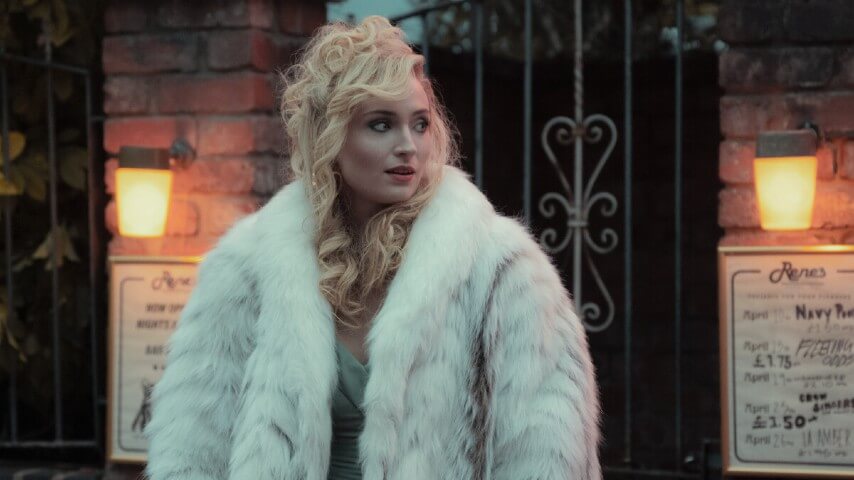Sophie Turner officially enters her grown-up era with Joan
The Game Of Thrones vet has a ball in The CW’s 1980s-set crime drama
Sophie Turner as Joan (Photo: ITV)
Sophie Turner has spent the first part of her career coming of age—initially in her phenomenal work as Sansa Stark on Game Of Thrones, then in her far more uneven turn as Jean Grey in the X-Men film series. Even her highly public pop-star marriage and divorce felt like it had the beats of a coming-of-age story, with eternal teen-girl icon Taylor Swift swooping in to save the day. Now, however, Turner is firmly entering her grown-up era with Joan, a British-American co-production loosely inspired by a real-life 1980s jewel thief named Joan Hannington. The story of a young mother stepping into her power, Joan is rooted more in crime-thriller tropes than young-adult ones. And while the series as a whole lacks a certain spark, it provides a strong platform to launch the next phase of Turner’s career.
In fact, casual fans might not even immediately recognize Turner, whose lanky blonde look makes her seem more like the long-lost sister of Elizabeth Debicki than the erstwhile Queen of the North. We first meet Joan as a working-class mom with a deadbeat boyfriend living in a rundown coastal town in Kent. Her aspirations of glamor are immediately apparent, however. She’s the sort of woman who squeals over diamonds and fur without particularly caring about how legally they were acquired. So when her husband’s criminal activities catch up to the family, Joan flees to London, gets a chic bob, and sets about trying to find a shortcut to amass her own wealth rather than relying on unreliable men to provide for her.
A co-production of ITV and The CW, Joan feels more like a refined British import than the sort of soapy stuff The CW used to air back when it was regularly producing scripted content. But it does share The CW’s penchant for style. Maybe the most impressive thing about Joan is that it manages to make the tacky 1980s look genuinely glamorous. Joan instinctively understands that the first step toward living like the other half is to look like them. And Turner wears the hell out of some jewel-toned jumpsuits and cut-crease eyeshadow as Joan fakes her way into a job at a jewelers and starts looking for the chance to take some five-finger employee discounts.
Joan’s cons become more elaborate once she meets a handsome, amoral antiques dealer named Boisie (Frank Dillane), who’s got deeper connections to the criminal underworld. Joan soon becomes a master of disguise, posing in whatever persona will get her close to the expensive item she wants to steal next: a bored, rich housewife with a taste for diamond rings; a lost hiker who just happens to stumble upon a wealthy estate; an art appraiser with an eye for 18th-century paintings. Turner is clearly having a blast getting to slip into so many different types of characters all in one series. And she’s equally great in the more conventional dramatic scenes with Joan’s young daughter Kelly (Mia Millichamp-Long), who she leaves in emergency foster care before fleeing Kent. Joan is a deeply caring mother but also a bit of an unsentimental one, and Turner plays that repressed emotion well.

 Keep scrolling for more great stories.
Keep scrolling for more great stories.